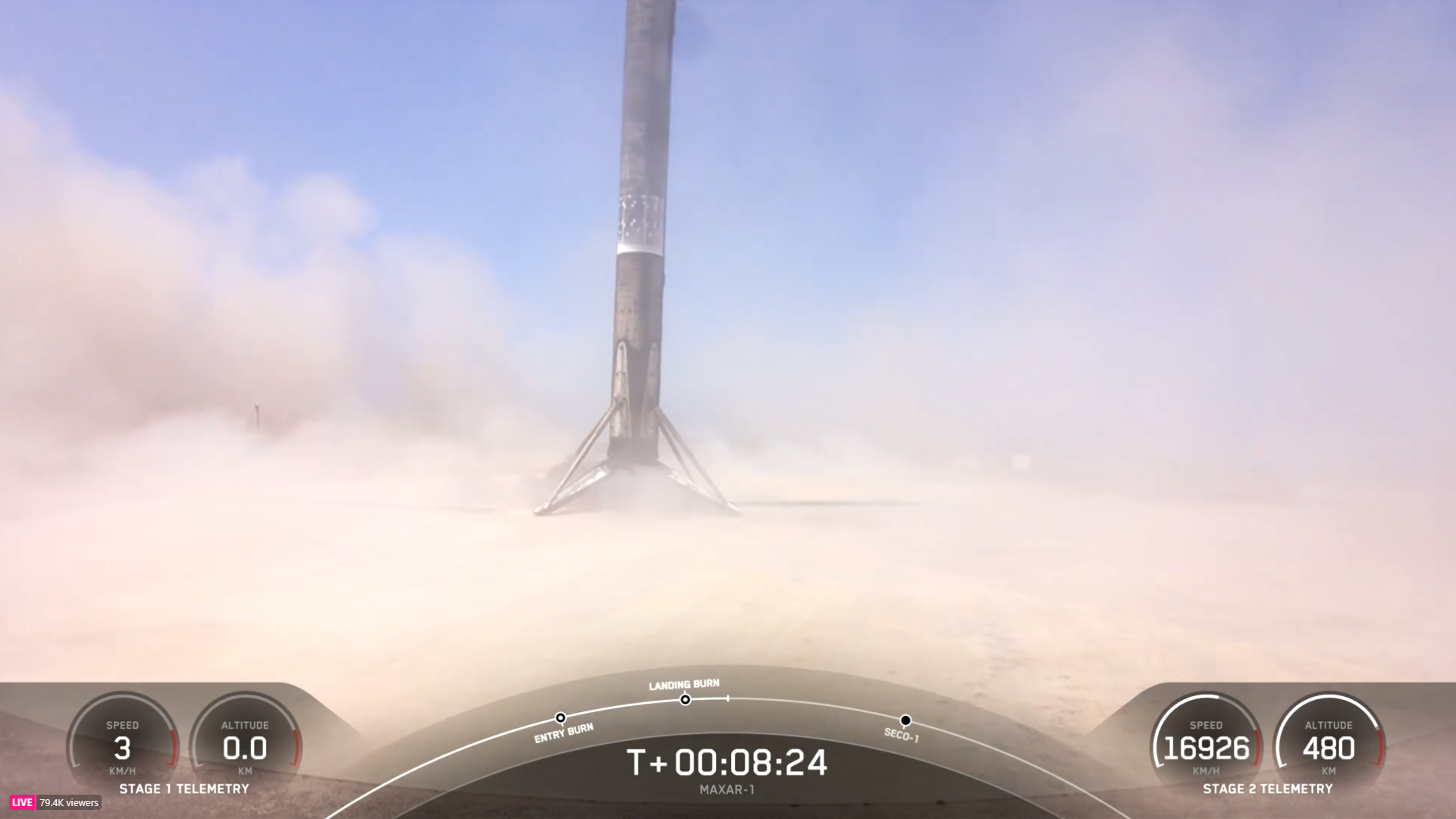
After completing two stunning back-to-back months with 12 Falcon 9 missions apiece, SpaceX kicked off May in fine style with Thursday morning’s launch and landing of a fleet-leading booster out of Vandenberg Space Force Base, Calif. Veteran B1061 took flight from the mountain-ringed West Coast launch site’s Space Launch Complex (SLC)-4E at 11:36 a.m. PDT carrying the inaugural pair of WorldView Legion geospatial imaging satellites to Sun-synchronous orbit and became the third member of SpaceX’s fleet in less than three weeks to reach a 20th mission.
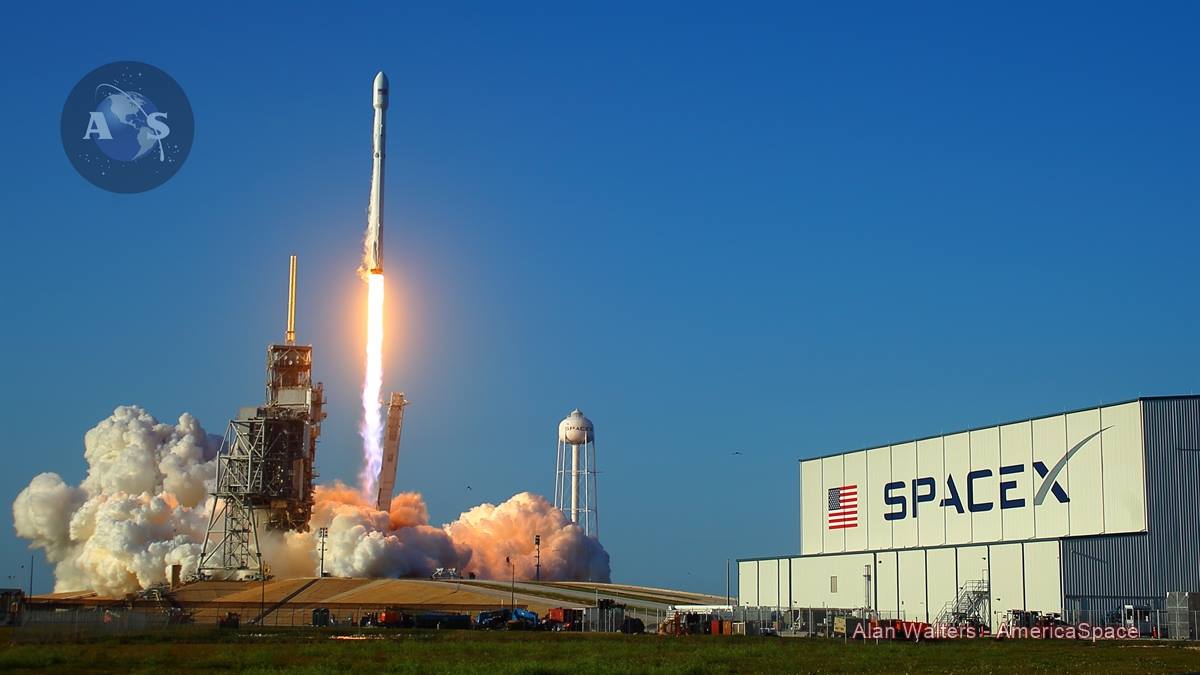
Looking back, it is remarkable that boosters have attained such high levels of reusability in such short timeframes. Only as recently as March 2017 did SpaceX reuse a once-before-flown Falcon 9 core for a second launch.
Those figures climbed rapidly as boosters scored steadily ascending numbers of missions and cemented gradually growing levels of maturity. Boosters achieved third flights for the first time in December 2018, fourth in November 2019, fifth in March 2020, sixth in August 2020, seventh in November 2020, eighth in January 2021, ninth in March 2021, tenth in May 2021, eleventh in December 2021, twelfth in March 2022, thirteenth in June 2022 and fourteenth and fifteenth in September and December 2022, respectively.
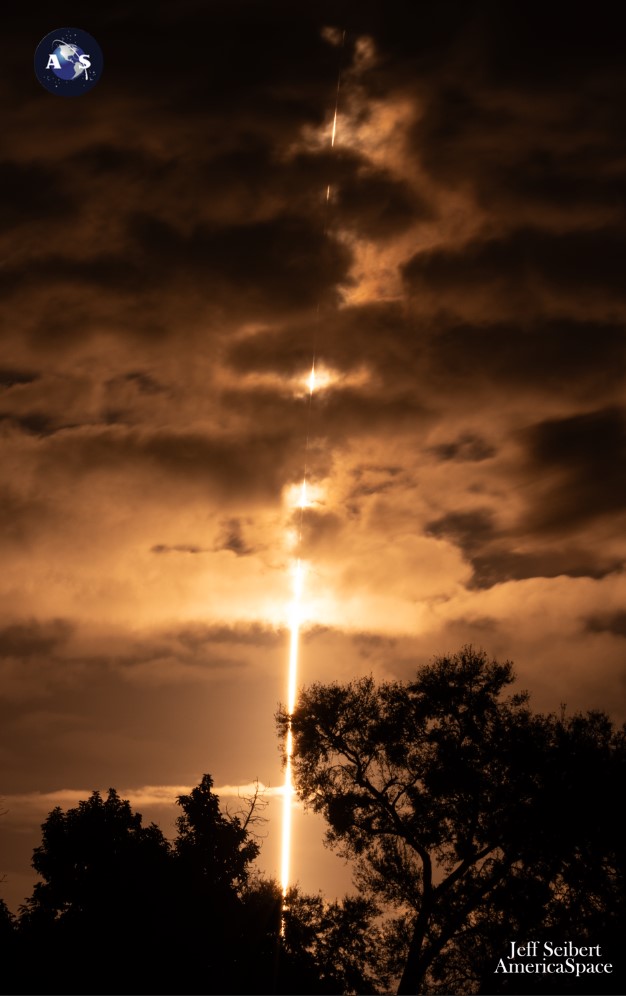
With boosters initially certified by SpaceX for an upper limit of 15 missions, the “active” status of two fleet-leaders was paused for six months in the opening half of last year as recertification got underway to extend their operational life spans to 20 flights. Veteran B1058—the one-time ride to space of “Bob and Doug”—went on to attain a record-smashing sixteenth mission last July, a seventeenth in September, an eighteenth in November and a nineteenth a few days before Christmas.
Sadly, B1058’s nineteenth launch proved her last, for although the mission was successful in its entirety, rough seas and high winds after recovery caused her to topple on the deck of the drone ship during her post-flight transit back to port and she was lost. Since then, a pair of boosters reached No. 20 within days of each other in April 2024, with one returning safely to land and enter refurbishment for another launch and the other intentionally expended due to the high-energy requirements of her primary payload.

Flying Thursday’s mission, B1061 is one of SpaceX’s comparatively few “coast-hopping” Falcon 9s, having flown nine times from the East Coast between November 2020 and June 2022. She was then transported to Vandenberg—a distance of more than 2,700 miles (4,300 kilometers), point to point, as the crow flies—for the second phase of her career, chalking up an additional ten flights between August 2022 and today.
B1061 entered service more than three years ago to lift Dragon Resilience and her Crew-1 complement of NASA astronauts Mike Hopkins, Victor Glover and Shannon Walker, together with Japan’s Soichi Noguchi, for their six-month Expedition 64/65 increment to the International Space Station (ISS). That launch marked the first U.S. human spaceflight to occur in the hours of darkness since the end of the Space Shuttle Program and Glover became the first African-American spacefarer to complete a long-duration mission.
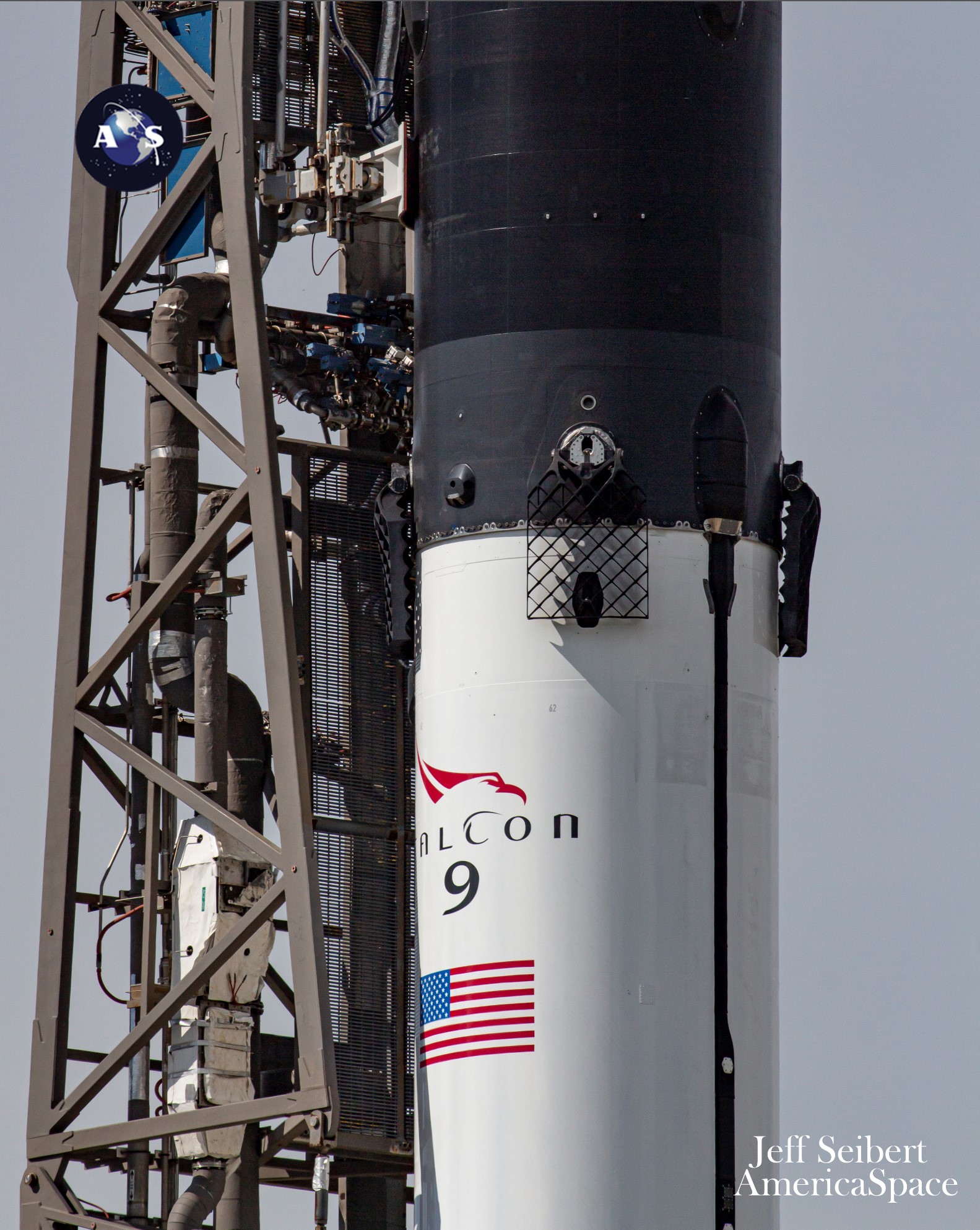
The booster went on to launch NASA’s Shane Kimbrough and Megan McArthur, France’s Thomas Pesquet and Japan’s Aki Hoshide aboard Dragon Endeavour for Crew-2 in April 2021, kicking off their own multi-month ISS increment which spanned Expeditions 65/66 and concluded after 199 days the following November to become the longest single mission ever undertaken by a U.S. crewed vehicle. That launch notably saw B1061 become the first “reused” Falcon 9 ever to carry crew.
Her human-hauling duties over, B1061 settled into a regular routine as a payload lifter. She launched SiriusXM’s heavyweight SXM-8 broadcasting satellite in June 2021, SpaceX’s CRS-23 Cargo Dragon to the ISS the following August and NASA’s Imaging X-ray Polarimetry Explorer (IXPE) in December 2021.
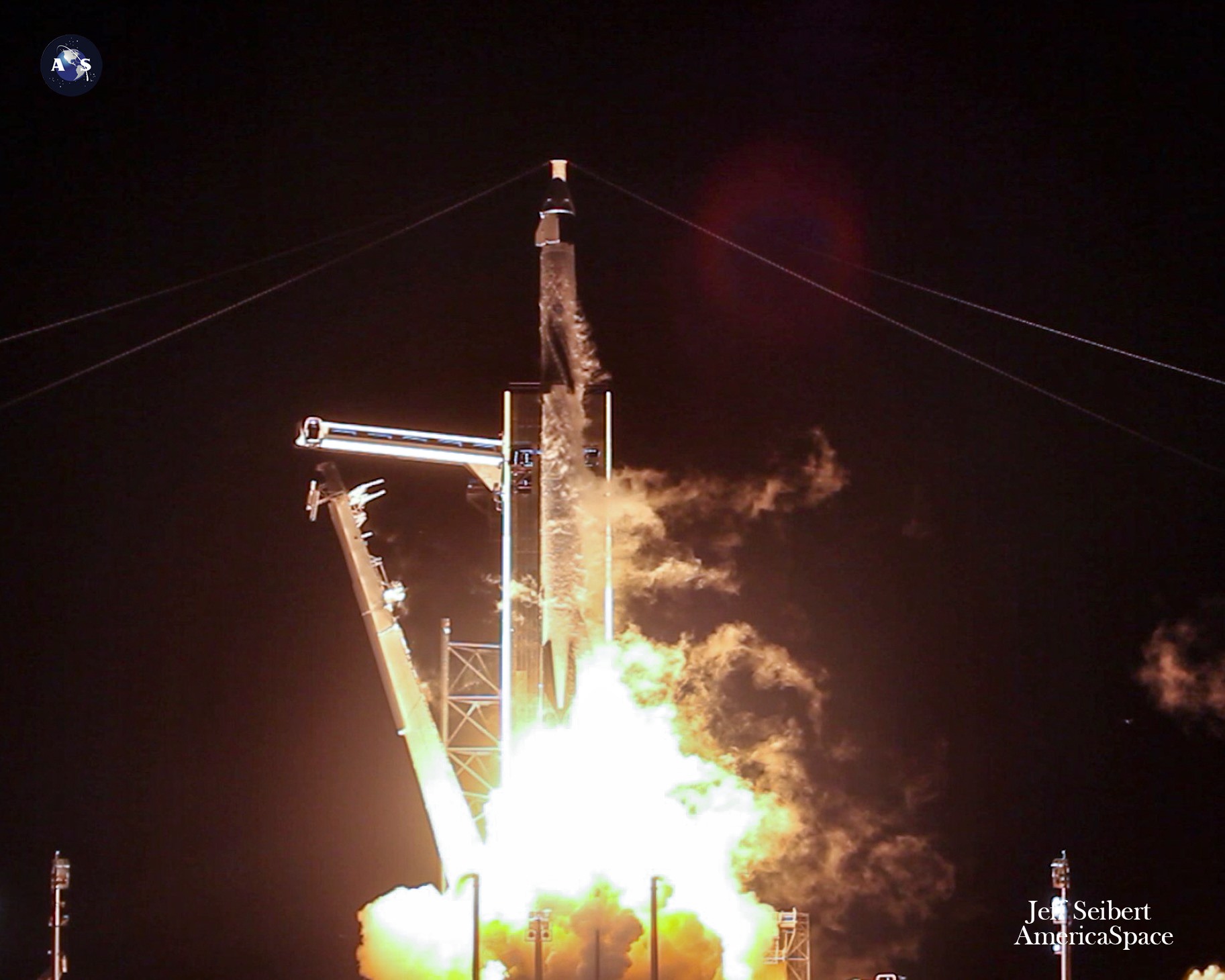
Six additional missions followed in 2022, as she lifted two batches of Starlink low-orbiting internet communications satellites in February and August and the multi-payload Transporter-4 and 5 rideshare “stacks” on April Fool’s Day and late May. This was followed by a Globalstar-2 global mobile communications satellite and a possible payload for an undisclosed U.S. Government customer in June and Israel’s EROS-C3 electro-optical surveillance satellite on the second-to-last day of December.
Last year also saw her complete six missions, delivering a further five Starlink payloads and South Korea’s 425 Project Synthetic Aperture Radar (SAR) military satellite into orbit. And 2024 has now seen her add three more flights to her tally, bringing her total number of lofted payloads to more than 400.
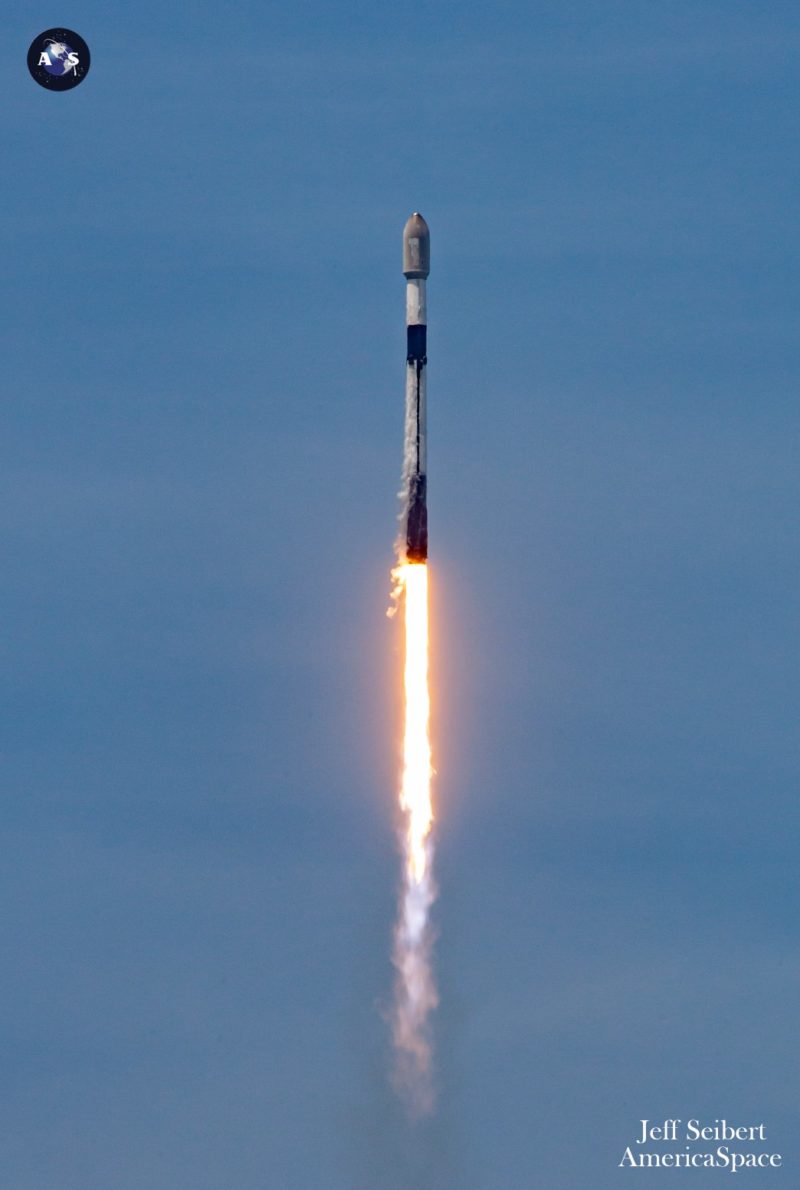
Today’s launch rides the coattails of a spectacular March and April for SpaceX, both of which saw 12 Falcon 9 boosters take flight and contributed to a growing yearly average of a flight each 2.8 days so far in 2024. Last month alone saw more than 200 Starlinks emplaced into orbit, the flights of the first pair of 20-times-used boosters and the 300th successful landing of a Falcon-class vehicle, either on solid ground or out at sea.
Aboard today’s mission were the initial pair of 3,750-pound (1,700-kilogram) WorldView Legion satellites, flying on behalf of Westminster, Colo.-headquartered Maxar Technologies, Inc. A full “constellation” of six of these satellites, operating at Sun-synchronous and mid-latitude orbits, will offer a revisit capability of some locations on Earth up to 40 times daily and the system is touted as being capable of gathering high-resolution geospatial imagery by resolving surface details as small as 12 inches (30 centimeters).
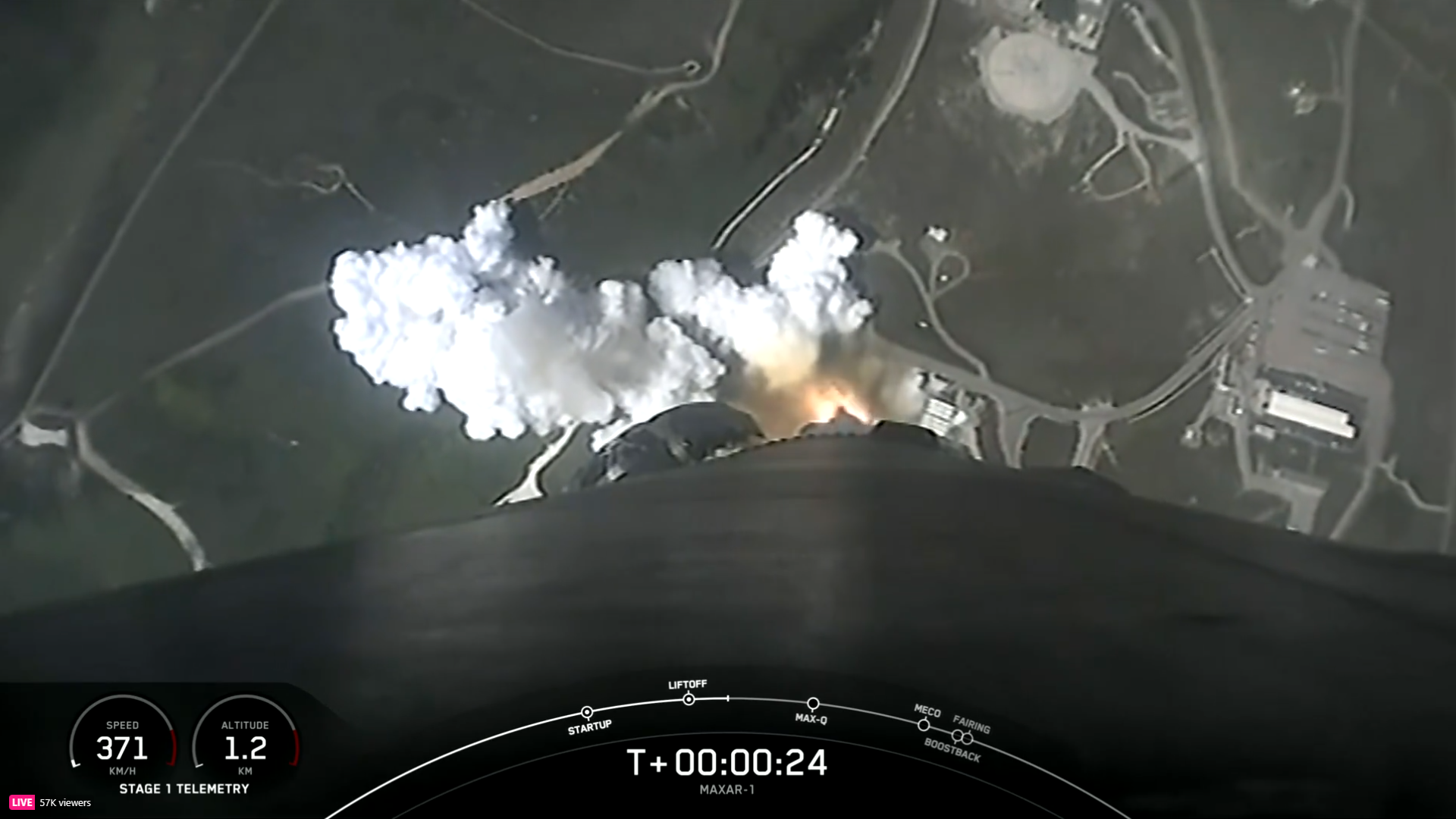
Contracts reportedly worth “several hundred million U.S. dollars” to build WorldView Legion were awarded to Space Systems/Loral (SS/L)—today a subsidiary of Maxar—by MacDonald, Dettwiler and Associates (MDA) back in July 2017. It was expected that the new constellation would more than double the high-resolution portfolio previously offered by geospatial imaging provider DigitalGlobe, which was itself acquired by Maxar only a few months later in October 2017.
Plans for WorldView Legion sought “to transcend previous limitations and meet the evolving needs of tomorrow’s users of Earth-imaging data and geospatial intelligence”, it was noted at the time of the July 2017 contract award. “The WorldView Legion constellation is designed to deliver a combination of high-resolution, sub-meter accuracy and fast revisit rates,” it added, citing a capability “to image the most rapidly changing areas on Earth as frequently as every 20-30 minutes, from sunrise to sundown”.
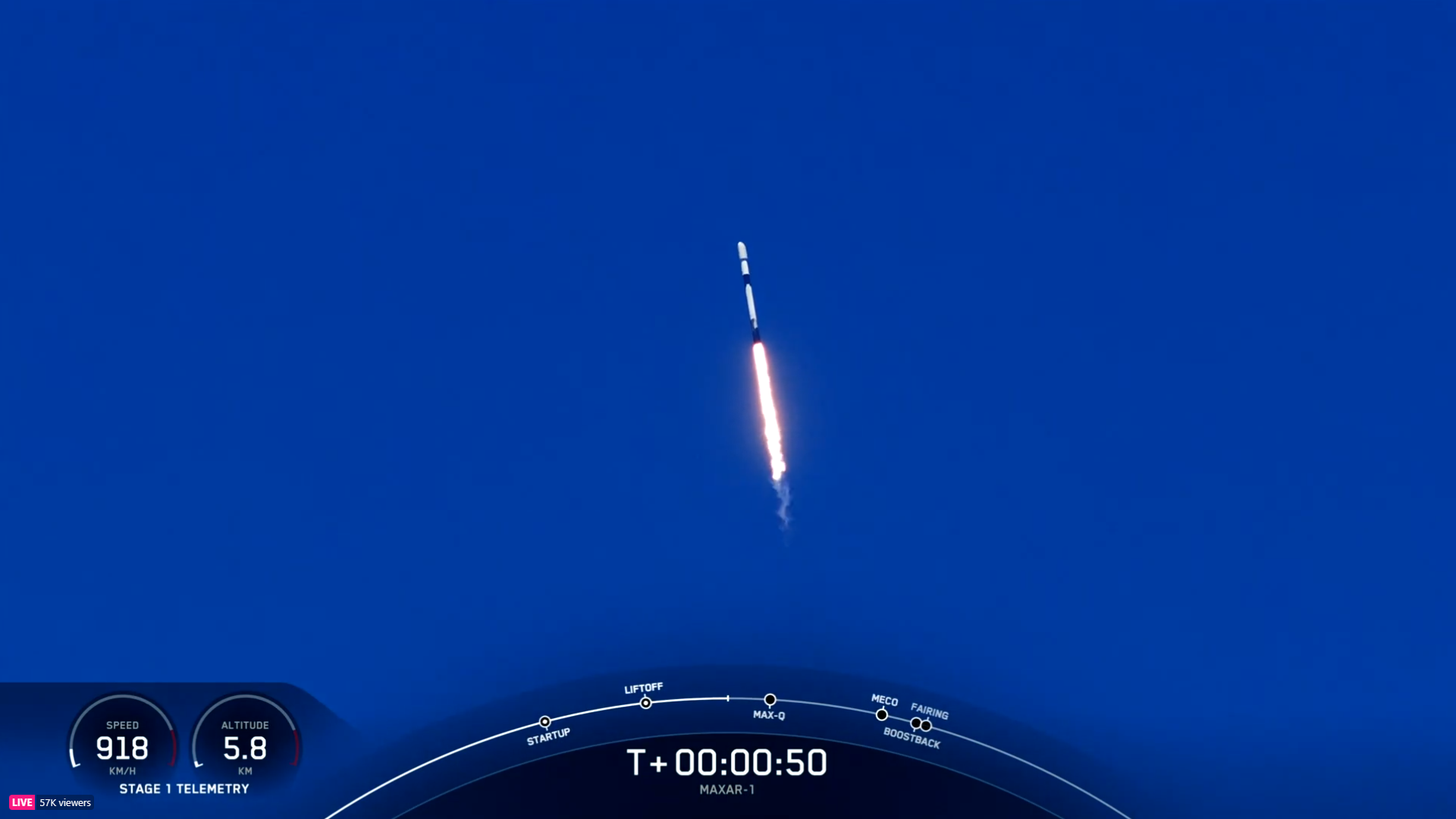
The satellites were delivered to Vandenberg by Maxar in mid-March for final pre-launch processing, with four others expected to fly aboard two other Falcon 9 missions later this year. “When all six WorldView Legion satellites are launched,” explained the Westminster, Colo.-headquartered firm, “it will triple Maxar Intelligence’s capacity to collect 30-centimeter-class and multispectral imagery.”
Liftoff of the first Falcon 9 mission of May occurred on time at 11:36 a.m. PDT, right on the opening of a 14-minute “launch window”. B1061 powered smoothly uphill for opening 2.5 minutes of ascent, before returning to alight on solid ground at Vandenberg’s Landing Zone (LZ)-4. Meanwhile, the booster’s second stage ignited to deliver the two WorldView Legion satellites into orbit, with deployment timed 3.5 minutes apart: the first at 13 minutes and five seconds into the mission, the second at 16 minutes and 35 seconds after launch.

Attention now turns to storied Space Launch Complex (SLC)-40 at Cape Canaveral Space Force Station, Fla., where an 18-times-used Falcon 9 stands ready to deliver 23 Starlinks to orbit during an expansive “launch window” that extends from 9:49 p.m. EDT Thursday through 1:17 a.m. EDT Friday. Weather conditions are predicted to hover around 85-percent-favorable, with a chance of violating the Cumulus Cloud Rule and Attached Anvil Cloud Rule thanks to an elevated potential for rain showers and lightning tonight.
Flying SpaceX’s second mission of the month, on the second day of the month, is seasoned B1067, a booster first launched in June 2021 and most recently in March, B1067 has now lifted ten batches of over 300 Starlinks to orbit, as well as four geostationary communications satellites and two pairs of crewed and uncrewed missions to the International Space Station (ISS).
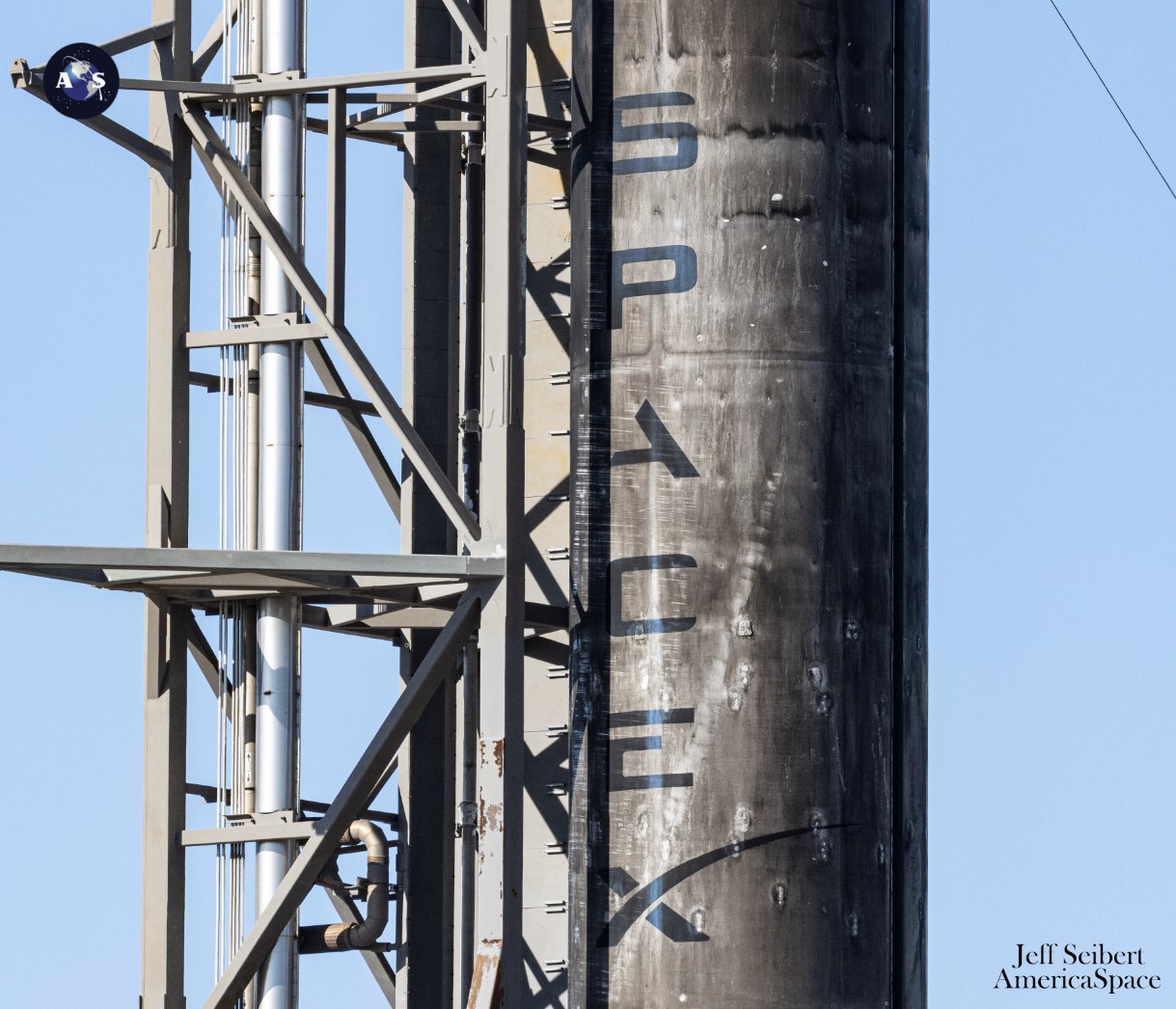
She first saw service almost three years ago to launch the CRS-22 Cargo Dragon for a month-long stay at the ISS. Next, she delivered eight astronauts from the United States, Germany and Italy to the orbital complex on Crew-3 in November 2021 and Crew-4 in April 2022, followed by the CRS-25 Cargo Dragon to the station the following summer.
Added to this impressive list, B1067 also lifted her first geostationary communications satellite for Turkey in December 2021—which helped set a new record (now broken) between pairs of Falcon 9 launches at less than 16 hours—and a pair of O3b mPOWER broadband satellites in December 2022. Other payloads included the Hotbird 13G communications satellite in November 2021 and last June the Satria Very High Throughput Satellite (VHTS) for Indonesia’s Pasifik Satelit Nusantara (PSN).
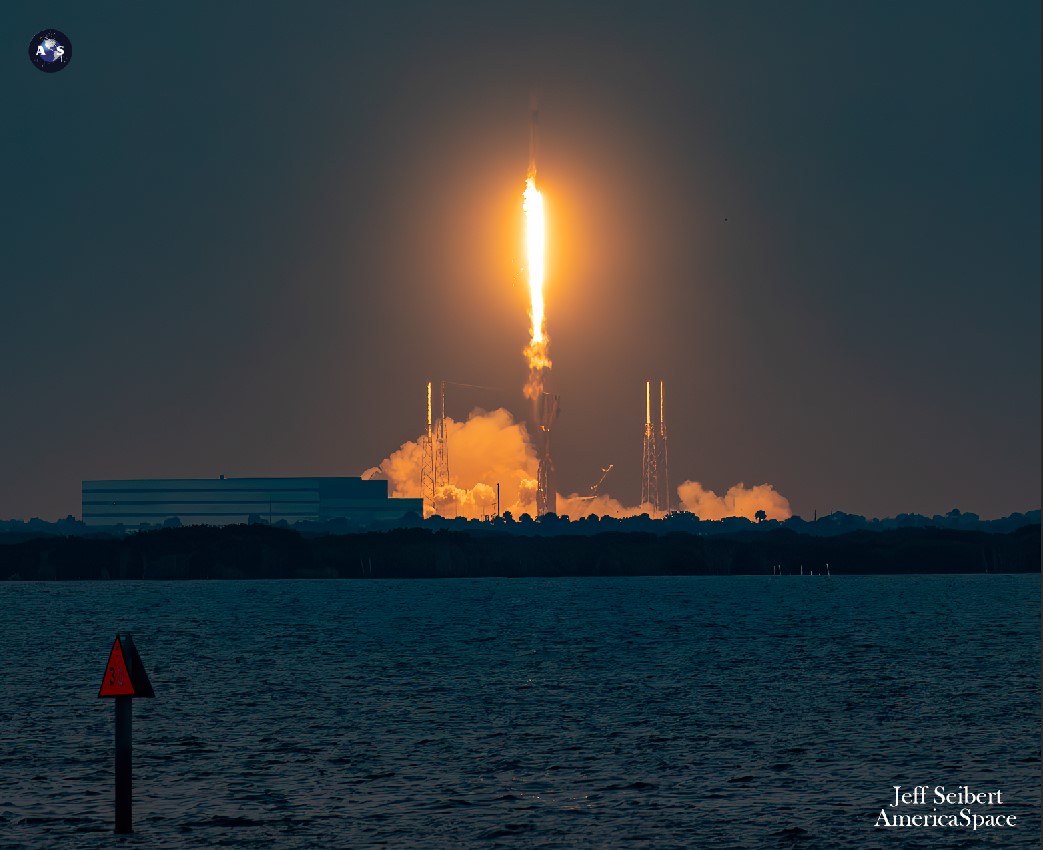
Notably, her Hotbird 13G launch in November 2022 marked the first time that SpaceX achieved 50 Falcon 9 missions in a single calendar year. And in January of 2023, one of her Starlink payloads tipped the scales at 38,400 pounds (17,400 kilograms) to become the heaviest Falcon 9 payload ever orbited at that time.




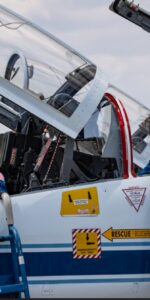

3 Comments
Leave a Reply3 Pings & Trackbacks
Pingback:SpaceX Flies Two Missions Hours Apart, Continues Starlink Cadence - AmericaSpace
Pingback:SpaceX Flies Two Missions Hours Apart, Continues Starlink Cadence - AmericaSpace - TraderStarter
Pingback:As CFT Starliner Moves to NET 21 May, SpaceX Launches 50th Falcon 9 of Year - AmericaSpace